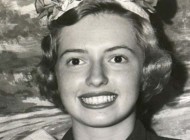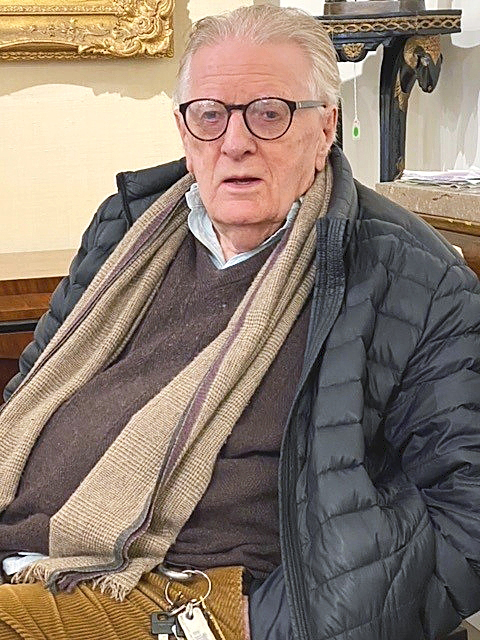
Niall Smith, in a photo taken in 2021 at his shop at 306 East 61st Street. Courtesy Angus Wilkie.
By Madelia Hickman Ring; with Contributions from Angus Wilkie
NEW YORK CITY — The British and Irish antiques community lost a giant in the field on April 25, when New York City dealer Niall Smith passed away in NYU Langone Hospital following a brief illness, at the age of 86.
Cornelius Nathaniel Smith, who went by the name “Niall,” was born on January 29, 1937, the youngest of five children of Bridget “Birdie” O’Connor and Jerome Smith. His father was the proprietor of a garage; his mother was a housewife and antiques collector who took Niall and his sister Satch to antiques shows when he was a child. He attended school at Rockwell College in County Tipperary, followed by the Shannon School of Hotel Management, County Clare, where he studied hospitality from 1956 to1960.
Niall came to New York City in the mid 1960s, living first in New York City but soon after visited San Francisco and Los Angeles, where he lived and where he had hopes of being discovered. He moved back to New York City circa 1968 and started dealing in a shop at 344 Bleecker Street in New York City in the early 1970s. Before his antiques business took off, he balanced his day job with a night shift as a waiter at The Running Footman three times a week. When times were tough, he casually referred to the shop as “Bleak House.” Such was his wit and self-effacing charm.
Business took off in the early 1980s. Niall can be credited for being the first dealer to introduce in quantity Biedermeier furniture to the US market. The 1979 exhibition at London’s V&A Museum, “Vienna in the Age of Schubert,” was an inspiration to him. His taste for Biedermeier grew into a reverence for Neoclassicism and objects of The Grand Tour, for which he became well-known. Frequent buying trips to Europe fueled the business, and by the late 1980s, he was a dynamic presence in the field.
Niall expanded to a second, larger shop in Soho at 96 Grand Street in 1990 and also maintained a large warehouse of English and Irish country house furniture in Long Island City. Gaining admission to the warehouse was strictly by appointment and felt as tricky as ducking into Studio 54; his opening line was invariably, “What’s your budget?” Later in his career, circa 2003, he consolidated both downtown shops and moved to the fifth floor of the Interior Design Building at 306 East 61st Street. He immediately dubbed the vast, rambling space “Terminal 5,” after the new British Airways Terminal at Heathrow.
His notable and regular private clientele included such luminaries as Robert Mapplethorpe, Bill Blass, Paloma Picasso, André Leon Talley and Anne Bass alongside architects and decorators, including Robert Stern, Michael Graves, Albert Hadley, Mica Ertegun, Bunny Williams, William Sofield, Jed Johnson, French decorator Jacques Grange, David Netto, Gil Schafer, Kitty Hawks, Katie Ridder, Michael Smith, Miles Redd, Mark and Alexa Hampton and countless more.
Niall’s life, lifestyle and antiques were profiled or cited in several publications, including Architectural Digest (1980/81 and 2021) Vanity Fair, House & Garden, The Irish Times (2021) The New York Times (1974 and 1989), and the New York Social Diary.
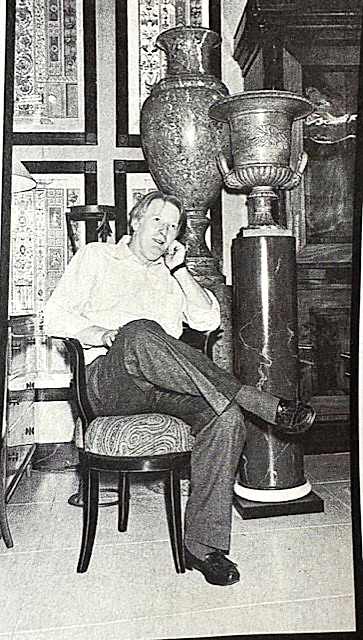
Niall Smith at his Soho shop, 96 Grand Street, circa 1990. Courtesy Angus Wilkie.
By 2015, he had consolidated to smaller premises on the second floor of 306 East 61st Street, and in May 2021, Stair Galleries in Hudson, N.Y., dispersed the contents of the gallery in an auction titled, “The Neoclassicist: Niall Smith.”
Interior designer Alexa Hampton penned an introduction to Stair’s sale catalog, in which she wrote, “Among those of us who are concerned with architecture, interiors and domestic beauty writ large — both highbrow, lowbrow and anywhere in between — there is a distinct group of people who can only be described as having a perfect ‘eye.’ These are the John Soanes of the world, the Emilio Terrys, people like John Richardson or Elsie de Wolfe, Madeleine Castaing, Bill Blass or the Duke and Duchess of Windsor.
These figures loom larger than life over the history of the visual arts and command our attention and our respect. Those of us who revere such ‘eyes’ are legion. We are designers, editors, architects, furniture makers and regular folk, too. We study these titans of taste and follow their lead by trying to emulate them — as though we ever could! — hoping to achieve this harmony that they seemingly effortlessly assemble. These ‘eyes’ are not simply stylish people; they are obviously brilliant and educated and cultured; and, creating beautiful spaces is their art. In this, they are pitch perfect, and their rooms and their collections telegraph the fact loud and clear.
For me, as well as for many of the denizens of his adopted home in New York City, and the world beyond, Niall Smith is an example of such a living, breathing ‘eye.’”
Speaking with Antiques and The Arts Weekly a week after Niall’s passing, Colin Stair said “I met him in 2002, in Hudson, standing in Tom Noonan’s antiques store. He said to me, ‘What are you feckin’ looking at.’ He tried to unarm you and I was scared to death of him for the first 10 years. He was a lion [in the field] and I came to know him very well. He was so kind and nice to us here; after we sold his collection, he sent us a lovely email and thank you card. It was great having his sale before he died; it reinvigorated him and got his name back in the news. He had great taste — it was just the chicest — and his sale was a tribute to him. We pulled out all the stops and worked to get it all just right. He was a real gent at the end of the day.”
Stair said he last spoke with Niall the week before Niall’s death. “I just picked up the phone. We spoke for about 30 minutes, it was the standard old gossip and chin-wagging about general stuff, the state of the auction market. He was very in tune with it. I’m just so glad I called him.”
Tom Noonan, now retired, spoke with Niall a week before he died and was happy to share some memories of his long-time friend, who he said he met in 1968 after Niall returned to New York City from Los Angeles.
“I met him at a dinner party I went to; we just hit it off. He was Irish and as an Irish American, I was what he called ‘stage Irish.’ I did artwork and was a commercial artist working freelance, so when I had spare time, I’d occasionally go with him when he went on buying trips.”
Noonan described a memory from Niall’s early days as a dealer, when decorators Albert Hadley and Sister Parrish would come to his shop. “Albert was a gentleman, but Sister would never get out of her chauffeured car. Albert would run inside, but things had to be brought out to her. It infuriated him that he had to sell curbisde.”
Angus Wilkie, a fellow dealer and the author of Biedermeier (1987), was one of Niall’s close friends and is the executor of his estate; he was with Niall when he passed away.
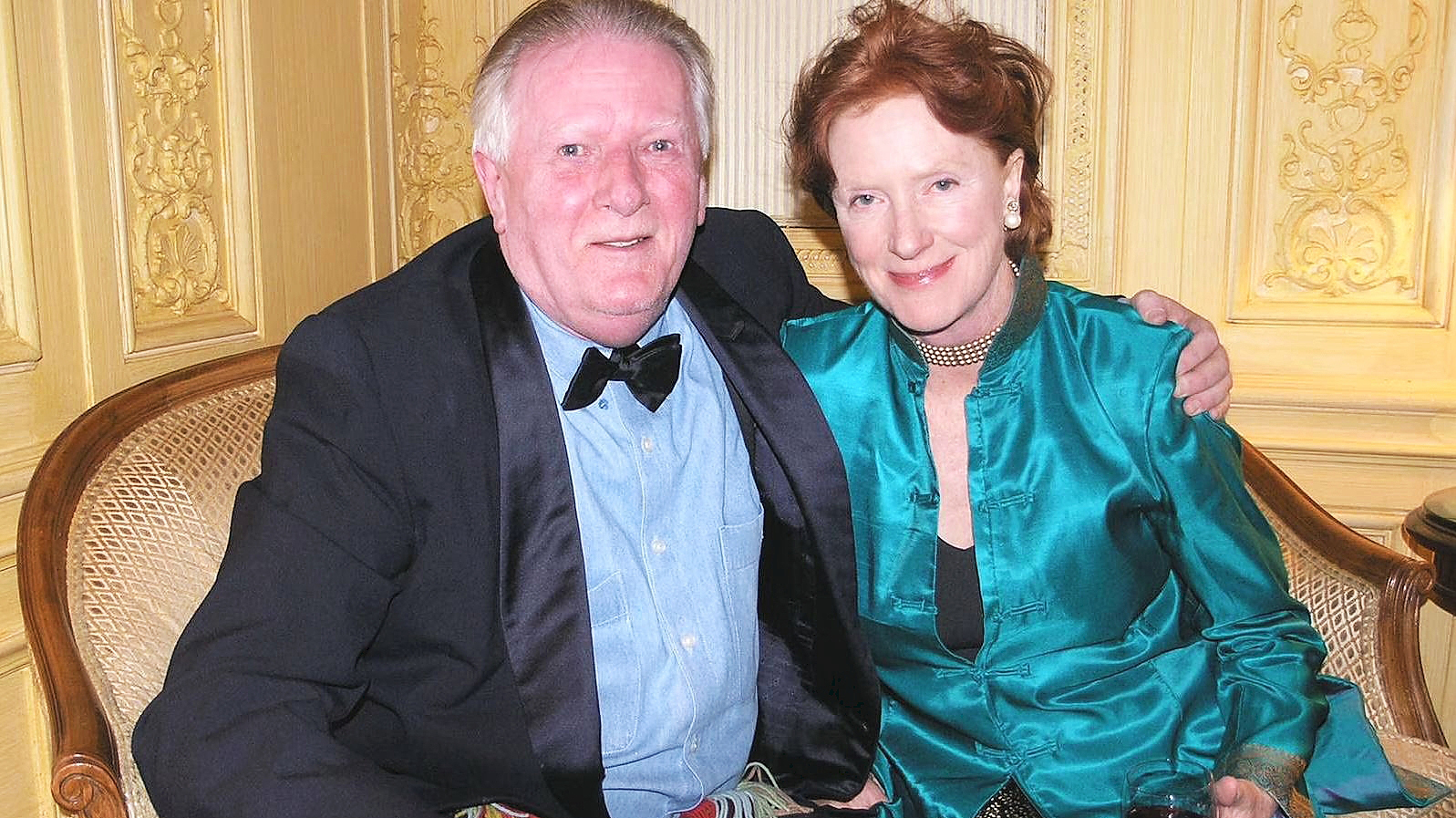
Irish antiques dealer Niall Smith with artist Edwina Sandys (granddaughter of Winston Churchill) in New York 2007. Photo courtesy Irish Times.
“I met him in the fall of 1980 while I was still a student at Yale. I wandered into his shop on Bleecker Street and found him in a hazy cloud of cigarette smoke. Possessed of an antic charm, Niall was also a character and raconteur. His personality fluctuated between a reserved reticence to discuss private life and the public domain of the shop where he delighted in receiving random visitors. He liked nothing better than to animate his Bleecker Street windows with theatrical arrangements of furniture and intriguing objects; with those artful displays as a teaser, he lured crowds into his tightly packed confines. Perched on a chair at the rear of the tiny shoebox shop, he seemed on stage, doling out opinions and dissecting recent decorating publications to the delight of anyone who appeared, including Park Avenue society ladies whom he called, ‘Carriage Trade.’ People came to see Niall, the man, as much as the merch…”
“A curious trait was that he had nicknames for his favorite friends, too… Niall was an individual — developing a language of his own which others, over time, learned to adopt — and could be bombastic. If he found the asking price of an object he considered buying at an antiques fair excessive, he would roar or simply walk away bellowing insults down the aisle. At first glance, he might be frosty and stare, or address a stranger bluntly as ‘Miss.’ Over time, if he grew to like someone, he adopted a nickname for them and peppered his shop talk with arcane Celtic phrases and references of his own invention. His disguised cast of close friends included, ‘The Empress, ‘Baby Doll,’ ‘The DTs,’ ‘Botticelli Baby,’ ‘Lalola,’ ‘Typhoon,’ ‘Lady Mental,’ ‘Aunt Rose,’ ‘Miss Kitty,’ ‘Christallah,’ ‘Linda Vanderbilt Morgan,’ ‘Agnes of God’…on and on.”
“His voice was unmistakable. He loved to tell stories and to talk. If he liked you, he could be extremely generous. He was incredibly smart and witty. He never lost his Irish brogue, a lilting Cork accent that was wonderful. I think what I’ll miss most is his conversation…it was always lively and full of opinion! In Ireland, people said ‘The crack’s alive when Niall’s around,’ referring to his quips and banter.”
Also with Niall when he passed away was Chris Ryan, who worked with Niall for more than 30 years, beginning in his Bleecker Street shop.
“When we had the stores, everyone who was anyone would come in. One thing that was fun — if he deemed them worthy, they got to go to the warehouse, in the back of his van which didn’t have seats; they’d have to sit on packing blankets. He would say getting into the warehouse was harder to get into than Studio 54.”
“He was a kind, wise man; you could ask him anything. Sometimes, if he wanted to have a go at you, he’d say ‘Now tell me…’ which would lead to a question that you’d dig yourself deep into. It always got a laugh out of him. He was intimidating but he was very fair, and he would accommodate you; he knew how tough it was out there.”
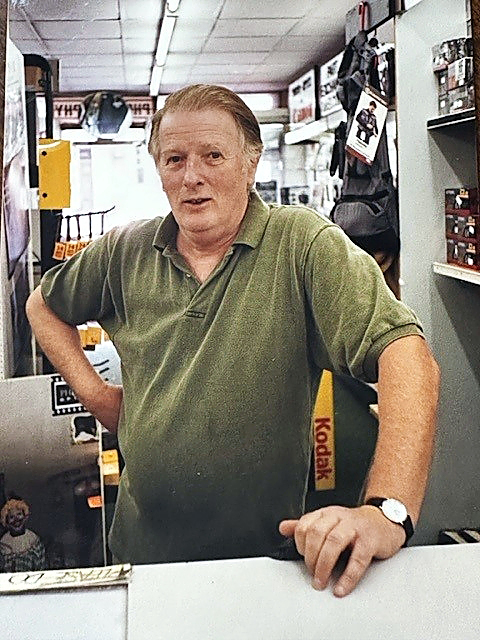
Niall Smith in New York City in the late 1990s. Photo courtesy Angus Wilkie.
“I remember once André Leon Talley came into the store wearing a Chanel coat and was there for awhile before he bought a clock but couldn’t find the key. They eventually found it on the floor and André said, ‘Oh my, I guess I have a hole in my pocket.’ Niall said, “I guess Karl Lagerfeld has to learn how to sew!’
“He didn’t suffer fools but called it like it was, things just rolled off his tongue. I’ve a million stories like that from the 30 years I worked for him.”
Some of Niall’s friends and colleagues remembered him on social media.
Interior designer David Netto posted the following on Instagram: “One of my favorite people, and a mentor if I ever had one, has died: the great antiquarian and raconteur Niall Smith. His friendship and storytelling were one of the high points of this career; to have his respect was like dining with a friendly lion (to not have it, like Life of Pi — a tiger in the lifeboat with you, as Gianni Versace found out when he once complained about a price. ‘Is your shit cheap??’ came Niall’s fiery response. Versace bought the desk). If you want to know whose taste Bill Blass respected, and from whom he learned a lot, we would have to build a Time Machine and go back to Grand Street on a Saturday afternoon in the early 1990s (the other shop on Bleecker had the smalls) to look, and equally important, to listen. Niall knew history as well as he knew where to find the best mahogany pieces still hidden in Ireland — the reason Irish furniture has such character, he once told me, starts with the wood — the ships coming back from Cuba stopped at Queenstown first (so the English got the scraps, as any good Irishman would have it). More Irish than this they did not come: whenever I paid for anything (at long last, according to Niall), he would always exclaim ‘Now we can eat, child!!’ like it was 1849. Dickens’ biggest regret might have been that he did not live in your time to write you, Niall, but my joy and great fortune was that you belonged to mine. Goodbye old friend, tutor, truth-teller, maestro, drinking buddy. You lit up the world.”
From Irish designer Clodagh, “Farewell to Niall Smith, the funniest, kindest and most loyal curmudgeon I have ever met. His impeccable taste, lovely Cork accent, excellent gourmet cooking skills and his two dogs, the Bobo and the Louise, captured my Irish heart 40 years ago. I had just moved to Manhattan after seven years in Spain and was lucky enough to meet Niall, a connoisseur of all good things, during the first week I spent in Manhattan.
“He introduced me to the silky elegance of strokable Biedermeier furniture and to his wicked wit. Irresistible. I toured upstate New York in his van with him and the dogs, with my husband snoozing on a mattress in the back. I will never forget the stops at antique stores and warehouses as he searched for Biedermeier and good classic pieces in a sea of bad or simply rustic furniture. He had the nose of a truffle hound, and he would be out of the “bus,” as he called his van, and do the tour of each stop in minutes. His eye was laser sharp, so a lurking piece of Biedermeier or a classic vase had no chance to escape. One inn had the temerity to refuse the dogs’ entry in below-zero weather, so we snuck down after midnight and brought them in and snuck them out at dawn.
“The best conversations and the most laughter took place at his dinner parties. Always at a round table. Always a great mix of people. He reminded me of Nancy Cunard, who, on being reprimanded about not having an equal mix of men and women retorted, ‘I invite my guests for conversation, not to mate.’
“Niall, you will have them in stitches of laughter up there somewhere. You have a special place in my heart always. I love you. Clodagh”
A video interview between Niall and Angus Wilkie, that was filmed in Niall’s Chelsea loft and created in 2021 by Stair Galleries ahead of his single-owner sale, can be viewed at https://vimeo.com/manage/videos/542618618.
Niall was predeceased by his parents, siblings, Kitty Smith, Francis Smith, Michael Smith and Phil “Satch” Smith, who developed, at Niall’s encouragement, her own antiques shop, Satch Kiely Antiques, in Westport, County Mayo; his niece Karen Kiely-Staed and his nephew Mark Hutch. He is survived by nieces, nephews and extended family, primarily in Ireland but also in England and Australia.
A memorial mass in Niall’s name was said on Monday, May 8. His family will have a memorial for him in Ireland in July 2023.
Donations in Niall’s memory can be made to God’s Love We Deliver in New York City (www.glwd.org) or the Irish Georgian Society, care of executive director Michael Kerrigan, 1953 North Clybourne Avenue, Suite R286, Chicago, IL 60614 (for information, 312-961-3860 or michael@irishgeorgiansociety.com).


